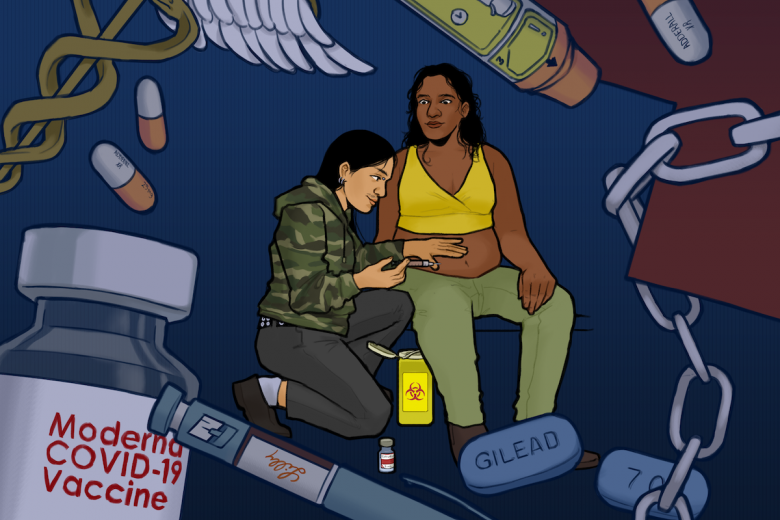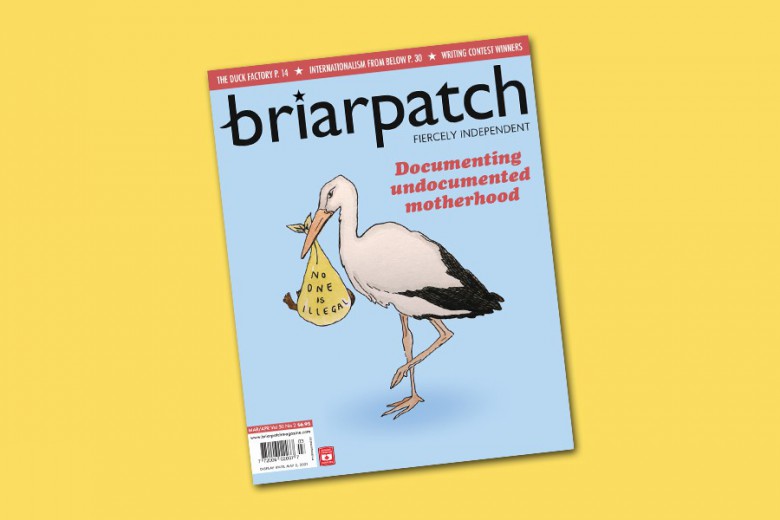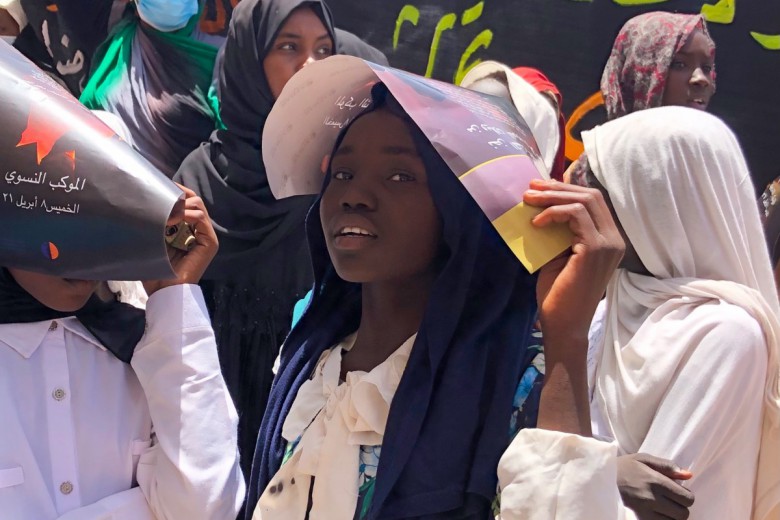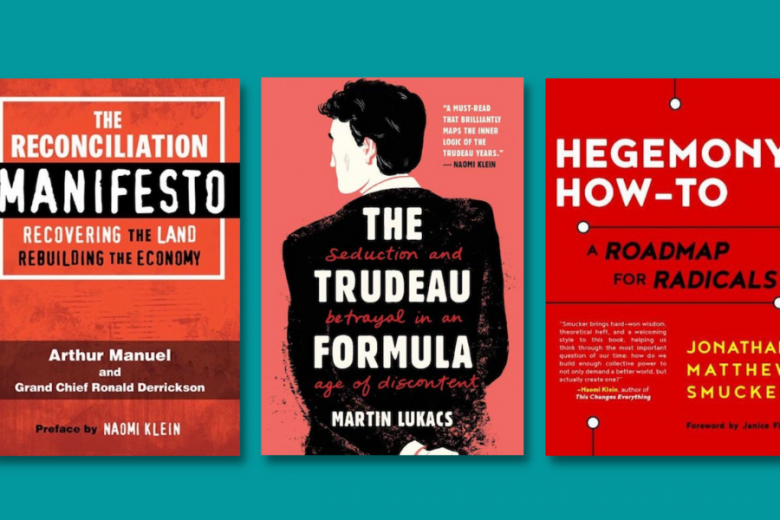A deadly new disease spreads and the government dithers. So the public, knowing the stakes, gets moving. When the state downplays the crisis, failing to collect and share vital information about how illness is insinuating itself through the veins of the body politic, autonomous civil society organizations and volunteers create their own online dashboard: tracking high-risk areas for viral exposure, for example, and unreliable pharmacies. Ordinary people distribute surgical masks and other personal protective equipment (PPE) when the state not only won’t do so, but even discourages (and in some cases, forbids) such precautions. After the government refuses to close transit links to the global outbreak epicentre, thousands of health-care workers go on strike. Along the state’s borders, explosives are discovered. A warning, it’s suspected, that the government must act to protect the public or face renewed revolt.
This isn’t speculative fiction. This was Hong Kong in January and February of 2020. “Through the combination of mutual aid and direct action to force concessions, [Hong Kong’s] protesters did what the government would not do on its own, saving untold numbers of lives,” recounts Dean Spade in his new book Mutual Aid: Building Solidarity During This Crisis (and the Next). The enormous 2019-2020 protest movement in Hong Kong, Spade notes, had forged many of the organizations and solidarities that enabled an extraordinary – and extraordinarily effective – from-below response to the COVID-19 pandemic’s first wave. The Hospital Authority Employees Alliance (HAEA), for example, whose workers struck for border closures and PPE, is among the almost 50 new labour unions formed during the protest movement. When the pandemic erupted, while most of the world still slept, ordinary Hong Kongers organized collectively without delay, since their recent experiences of struggle – however contradictory – had taught them that the state wasn’t coming to save them.
“Through the combination of mutual aid and direct action to force concessions, [Hong Kong’s] protesters did what the government would not do on its own, saving untold numbers of lives.”
At the time of writing, Canada, with five times Hong Kong’s population, has seen 112 times as many COVID deaths. Canadian governments’ pandemic policies have been murderous: premature economic reopenings, mass winter evictions and encampment clearings, workers denied paid sick days, inadequate PPE provided to so-called essential workers menaced by an airborne virus, a staggering abandonment of our loved ones in long-term care, and a general tendency toward opportunistic minimization of the pandemic’s dangers. It’s the kind of state contempt that immediately provoked dramatic resistance in Hong Kong. In Canada, by comparison, faced with such violence, few of our civil society organizations have mustered measures more confrontational than petitions or statements. Maybe that should come as little surprise, given the prevailing low levels of left and labour militancy in the country. Yet 2020 began with one of the most far-reaching, disruptive, and potentially transformative popular rebellions in the Canadian state in decades. The Wet’suwet’en solidarity movement saw thousands of participants, both Indigenous people and settlers, rise up to demand that the Coastal GasLink pipeline’s developers and the RCMP cease trespassing on sovereign Wet’suwet’en territory. At the movement’s peak, its tactics included widespread rail and other infrastructure blockades, some of them attended by hundreds of people.
A year later, might we dare to imagine that a similar spirit of militancy could make a growing appearance in the fight against pandemic-era social murder in this country?
In Canada, by comparison, faced with such violence, few of our civil society organizations have mustered measures more confrontational than petitions or statements.
The crisis is certainly deep enough to justify it. As of the time of writing, catastrophic mismanagement of the pandemic has killed more than 23,000 people in Canada, with untold numbers of others experiencing long-term, possibly permanent disability (including “Long COVID" symptoms) as a result of infection. This avoidable death and incapacitation has affected already oppressed communities so disproportionately that the underlying policy must be described as ableist, ageist, anti-Black, anti-Indigenous, racist, anti-worker, and rooted in a vicious contempt for poor people and prisoners. In much of Canada, the pandemic’s intensification of already existing oppression along established social fault lines is so extreme that (to paraphrase various dead Germans) the quantitative difference becomes a qualitative one.
Contrast this disaster with the situation in Canada’s Maritime provinces and Northern territories, or in countries like Taiwan, New Zealand, or Vietnam, which implemented effective virus-crushing strategies (described sometimes as “suppression,” sometimes as “elimination”). Those jurisdictions all but wiped out local transmission of COVID-19 through policies that included timely economic shutdowns with strong support for those affected; clear and accessible public health communications; and robust test/trace/isolate systems able to catch new infections before they spread. The horrors of pandemic social murder were never inevitable. They could have been, and could still be, refused.
Careful organizing and generative sparks
“I have to admit to being really shocked by how few mass work refusals took place in the first wave,” labour historian and union organizer Doug Nesbitt tells me. “It says that workplaces are highly unorganized, with no job action experience, and dominated by fear.” Nesbitt points to key exceptions across Canada: the collective health and safety work refusal by 70 CUPE Local 5167 sanitation workers in Hamilton in March 2020 and the threat of similar action by Edmonton postal workers last spring. “Edmonton’s experience is that safety measures were only implemented with urgency by [Canada Post] once workfloors began openly discussing, and preparing, to refuse unsafe work,” the Canadian Union of Postal Workers (CUPW) said in a statement at the time. “We expect that any further improvements will require similar pressure.” A year later, the urgency of building up that pressure has been underlined by the recent death of an Ontario CUPW worker who tested positive for COVID-19 after an outbreak at their workplace.
Nesbitt says that health and safety work refusals, like those undertaken in Hamilton and threatened in Edmonton, have the potential to be a crucial lever of collective power while the pandemic is ongoing – especially given the illegality of so many other forms of collective self-assertion on the job. “Where it does exist, the right to strike in Canada is basically outlawed except when contracts have expired and various efforts at bargaining have been exhausted,” Nesbitt explains. “So job action is going to be illegal and result in casualties – people can and will be disciplined, fired, fined, blacklisted, arrested, and charged.” The refusal to work in unsafe conditions, on the other hand, has a broader legality that could protect disruptions by a set of workers who aren’t otherwise in a legal strike position. “We’re in a pandemic now, and the crisis is in countless workplaces. The potential of an unsafe work refusal movement is really big,” says Nesbitt. “It opens up the possibility of a new workers’ movement emerging, and new kinds of worker organization.”
“I have to admit to being really shocked by how few mass work refusals took place in the first wave. It says that workplaces are highly unorganized, with no job action experience, and dominated by fear.”
Nesbitt stresses that those possibilities need to be built workplace by workplace, through careful organizing. He suggests that individual organized workplaces might overcome their isolation by struggling together for shared demands, like paid sick days or public ownership of long-term care – common political goals that can bind, sustain, and scale worker militancy across different sites. In this way, scattered pockets of resistance might unify into a force able not only to shake individual bosses, but also to shift policy and confront the state.
It’s common to think and talk about this sort of network as a phenomenon that could be called additive: organizing each workplace, each apartment block, before linking them all together in a chain strong enough to fight powerful enemies. This theory of change grasps that the work of political education happens first of all through conversations on doorsteps and on the job, over coffees, phone calls, shared meals, WhatsApp group chats. There can be no mass politics without local organizing as its foundation.
Yet it’s striking how many of the explosions of popular political energy in the past two years – like the social movement that undergirded the pandemic resistance in Hong Kong, as well as last summer’s historic uprisings for Black lives in the United States and elsewhere – have involved workplaces but erupted primarily outside them. And how those movements’ relationship to individual sites of struggle has been not strictly additive, but also generative – that is, rooted in existing forms of organization, but also creating a dazzling cascade of new forms (nearly 50 new labour unions in Hong Kong!) in the period of social eruption, the way exploding stars release a shower of new elements like gold and iron. Those new forms can give us extra leverage against the ruling class – enabling, for instance, the coordination of a health workers’ strike, as in Hong Kong. A theory of change that emphasizes the importance of such moments of generative acceleration helps to explain how necessarily slow, site-specific local organizing might transform to meet both the urgency and the enormity of today’s crises.
It’s striking how many of the explosions of popular political energy in the past two years – like the social movement that undergirded the pandemic resistance in Hong Kong, as well as last summer’s historic uprisings for Black lives in the United States and elsewhere – have involved workplaces but erupted primarily outside them.
There’s no question that workplace militancy is essential to the fight against pandemic social murder and austerity. To extract profit, capitalists need workers they can underpay and overwork, so disruptions to that process will remain a potent weapon for as long as capitalism exists. Housing struggles, too, have been at the heart of militant confrontation with capitalism and the state during the pandemic, and they are likely to only intensify. Landlords (and those who invest in commodified, financialized housing) are motivated to evict long-term and low-income tenants to escape rent controls, while tenants have an existential need to organize, fight back, and keep their homes. But bosses, landlords, and the state, with their injunctions and their cops, will typically keep the upper hand when resistance to them doesn’t develop a mass character. And whether individual sites of organizing are able to cohere into mass militancy, becoming not just additive but also generative, seems likely to hinge on two key factors. One is the strength of the solidarity built between them. The other, just as crucial, is the effectiveness with which those organized networks are able to mobilize in response to unpredictable political upheavals – against anti-Black state brutality, say, or violations of Indigenous sovereignty – whose proximate cause may not be bosses or landlords at all.
How might we nurture that kind of movement? One that includes a large number of union locals, tenants’ associations, and other community organizations, while also achieving an escape velocity that transforms it into a political force greater than the sum of those absolutely essential parts? In his essay “We Live In a Society” in n+1 magazine, Gabriel Winant talks about “the disarticulated elements of a left-wing hegemony” that came into greater focus in 2020. He lists, as distinct but increasingly associated fragments of a left fighting bloc in the United States, a “panoply of Black activist organizations that emerged or grew [last] summer,” alongside tenants’ unions, the Democratic Socialists of America, related groups like the Sunrise Movement, increasingly mobilized trade unions, and elected figures like Ilhan Omar and Nikil Saval, who are imperfectly but genuinely connected to grassroots struggle – all consolidating around, most centrally, the problem of white supremacy under capitalism. The more webs of solidarity are deliberately woven between such elements, the more a formidable mass movement begins to come into focus.
Educators’ work refusals
It’s this task of weaving ties between social fractions that Julius (who uses they/them pronouns), an educator in Toronto, identifies when they survey the state of educator organizing in Ontario during the pandemic. Schools in the province have reopened, multiple times now, with class sizes too big to allow much room for physical distancing, inadequate ventilation, limited asymptomatic COVID surveillance testing, and no employer-paid sick days in place to support parents to stay home with sick kids – conditions that rank-and-file educators’ groups like Ontario Education Workers United (OEWU), alongside community allies like Ontario Parent Action Network (OPAN), have been organizing to improve. “Ultimately,” Julius says, “our greatest challenge is to get the larger population to care about the issues at hand. To see education as a central space where we can advocate for social change.” That kind of public buy-in is pivotal if work refusals or other militant tactics are to have a chance of winning their demands. Reflecting on last October’s health and safety work refusal by educators at Glamorgan Junior Public School in Scarborough, Julius suggests that community support for educators in such moments is inseparable from educators’ advocacy on behalf of communities. When educators show up in solidarity with local organizing, or make broad-based demands for justice (like the Chicago Teachers Union’s demand for affordable housing, a key plank of their 2019 strike), work refusals start to have whole neighbourhoods behind them.
“Ultimately,” Julius says, “our greatest challenge is to get the larger population to care about the issues at hand. To see education as a central space where we can advocate for social change.”
Julius also points to the role of unions in enabling or discouraging such militancy. “Of the two unions [representing workers involved in the Glamorgan walkout],” they report, “CUPE took a strong stand and described the working conditions as a ‘terrible situation to be in,’” while the Elementary Teachers’ Federation of Ontario (ETFO) distanced itself from the action. The latter union, Julius says, claimed that “‘this is an individual work refusal’ and offered no further support.”
Nigel Barriffe, an executive officer at ETFO’s Toronto local and an organizer with OEWU, tells me he thinks all the public school unions see educator work refusals as a legitimate form of resistance but approach them cautiously, affirming only the letter of the law. “In my local … we’re currently in a struggle for what I feel is the soul of our organization,” he says. Barriffe explains that he and his allies are fighting for a “social justice approach to unionism,” which would allow the union to issue broad demands like the call for paid sick days, rather than a business unionism model that just manages economic transactions and reduces friction between workers and bosses. For Barriffe, there’s a clear need for educators to engage with community members’ struggles for justice, in whatever forms those take. “We teach their children! Their children come to our classrooms! How could we not be making sure that we’re staying with them when they say that they’re [dealing with] a bad landlord?”
Sarah Vance, another organizer with OEWU, worries that the educators’ unions in the province may have played a role in demobilizing rank-and-file resistance. “In September, in the early parts of the fall, when there were a significant number of education workers talking about wanting to engage in work refusals…I think the fact that they did not get the degree of organizational, union support they should have gotten has really helped to undermine people’s confidence in a situation in which they already feel really shaky.” Vance, a high school teacher, also laments her union’s decision to ratify a new collective agreement toward the start of the pandemic, under pressure. “Many of us argued that it was a serious strategic mistake to sign off on a bad deal in the middle of a crisis,” she says. “We could have called for a pause in negotiations. Instead we lost a massive amount of political leverage and have been hammered by the government ever since.”
"I think the fact that they did not get the degree of organizational, union support they should have gotten has really helped to undermine people's confidence in a situation in which they already feel really shaky.”
Vance’s work with OEWU is fuelled by her observation that where educators’ unions are powerful political forces, as in Chicago or Los Angeles, rank-and-file organizing is the reason why. “It has been rank-and-file organizers creating their own parallel structures and doing that slow build – of grassroots mapping, organizing, gradual building of confidence, connection with community – that has enabled them then to either profoundly influence the directions their unions are taking or eclipse their unions by taking action on their own.” In Chicago, for instance, the Caucus of Rank and File Educators (CORE), which formed in 2008 to oppose school privatizations and closings, ran a winning slate in the Chicago Teachers Union’s 2010 election and has since remade the union as a champion of the city’s whole working class. At the heart of such organizing remains the careful, long-term work of building relationships. As Barriffe says: “We need to be having one-on-one conversations … to really understand where the majority of our membership are.” Such conversations engage the whole political life of the person, not just what concerns them specifically as an educator, parent, or student.
All of the educators I spoke to emphasize the need for this kind of intersectional approach to worker organizing – one that not only prioritizes combatting structural oppression within workplaces and unions, but also, as Angela Davis puts it, recognizes “an intersectionality of struggles.” Coalitional organizing that builds practical solidarities, laying a foundation for unplanned, unplannable moments of political rupture where the relationship between individual sites of organizing stops being merely additive, but becomes generative. As exponential as viral growth.
A prairie fire
For a moment last fall, it looked as though an opening of that kind might have appeared. On Monday, October 26, 2020, health-care workers in the Alberta Union of Provincial Employees (AUPE) conducted an illegal strike against threatened privatization, outsourcing, and job cuts, among other issues. It was the first wildcat strike in the province since 2013, an act of defiance on a scale that has remained vanishingly rare in Canada during the pandemic: 49 worksites across nearly 40 towns and cities. “It was the scariest and most exciting day of my life,” says Victoria,* a hospital worker in Edmonton. And it was clearly a long time coming. “When I was going to work [before the strike], you know, I was getting the absolute sense that people were just fucking ready to go,” she says. “Every day it was like, well, when are we going on strike?”
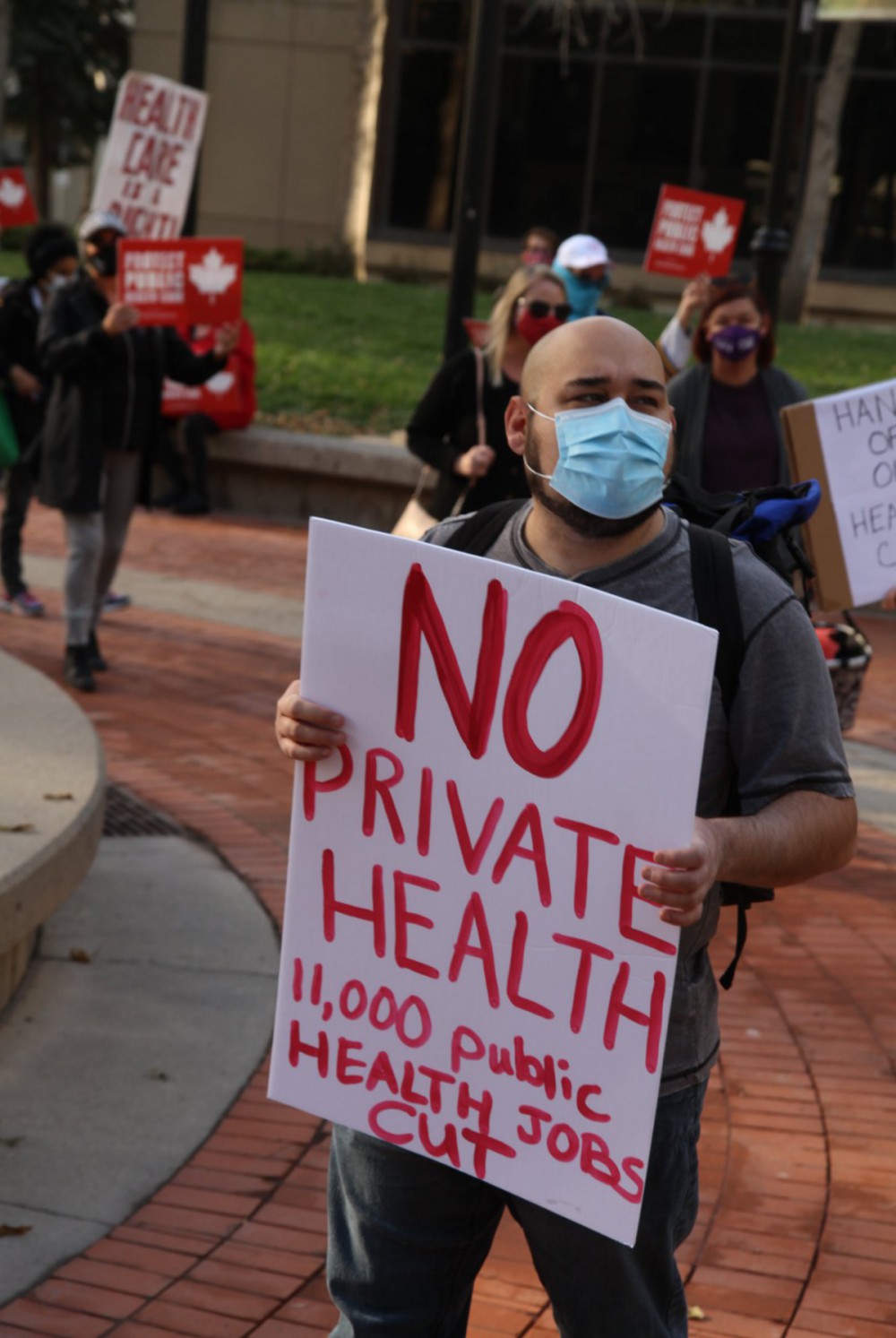
The wildcat lasted only a single day. One reason it couldn’t be sustained longer, Victoria suggests, was hesitation within AUPE’s staff ranks. “I think that the union leadership should have taken a more active role … rather than just sort of leaving it to the members to initiate, basically on their own impulse,” she tells me. “A better fan-out of communication … more affirmation and reassurance from the union beforehand, a little bit more inoculation of the risks.” Another limiting factor, she says, was the relative lack of practical support from other unions. “A lot of nurses I talked to before, during, and after [the strike] were like, ‘Yeah, we would have loved to be out there with [you]. But our union instructed us to go out only on breaks.’ I think we really need to build solidarity between unions.” Support from the community, on the other hand, was overwhelming. “Even our conservative relatives … you know, I think people really got it, that these are our front-line workers out on strike.”
The rebellion was contained. Threats of disciplinary action from Alberta Health Services, in combination with those other limiting factors that Victoria describes, succeeded in breaking the strike. But the way it did spread, while it lasted, hints at how a militant mass movement for justice during the pandemic – and beyond it – might kick off. The spark that started this prairie fire was a number of housekeeping staff at Edmonton’s Royal Alexandra Hospital simply deciding they’d had enough. Once in motion, the wildcat raced across the province, leaping between cities by word of mouth. Some workers joined the action after hearing about it on the news. Here again: an exponential – generative – mathematics. As Carly,* also close to the strike, puts it: “You’re on the picket line and you’re hearing people read lists of all the other sites that were on strike, and like, that really struck me, because so often that does not feel possible. Like it feels in fact completely impossible that something like that could ever happen. And I think that’s why strikes are so important, because they open up these feelings and moments of possibility.”
“Even our conservative relatives…you know, I think people really got it. That these are our frontline workers out on strike.”
Of course, that thrilling spontaneity was the visible part of an iceberg of long-term capacity-building among AUPE’s rank and file. And it wasn’t enough on its own, Victoria stresses. “[The strike] just dissipated into the air,” she tells me. “It’s like that old analogy of the steam and the piston box. Neither works without each other, and we had lots of steam that day, but no apparatus or mechanism to actually direct that into a strike that wins.” The awakened fighting forces needed more leadership.
Yet there’s also a real chance that if practical solidarities – support from other unions, other struggles – had helped to sustain the strike a little longer, it could’ve generated the leadership it needed, birthing the forms of organization that would’ve let it keep fighting, like those dozens of new labour unions created by the Hong Kong protest movement. A real chance it could’ve grown and kept on growing, activating the tectonic seam of anger running through so much of this country that condemns so many people to needless suffering and death. “What I remember most from the strike,” Carly says, “…the morning … it felt like anything was possible. It was like anything could happen.”
*Names of sources close to the AUPE wildcat strike have been changed to protect them from reprisals.



